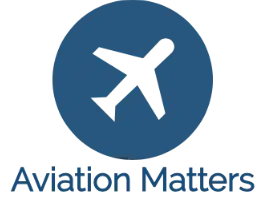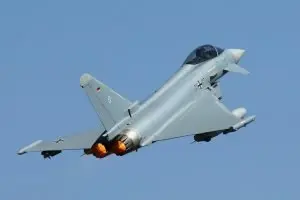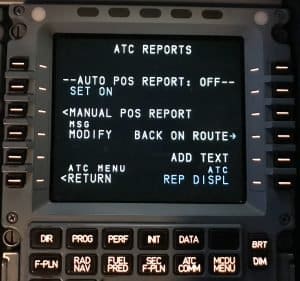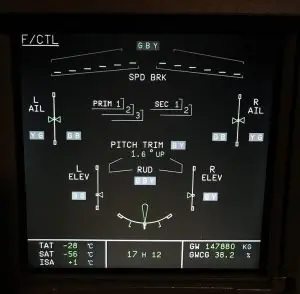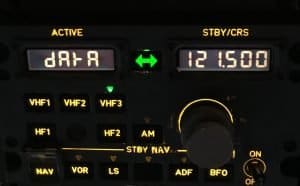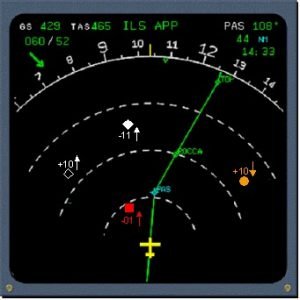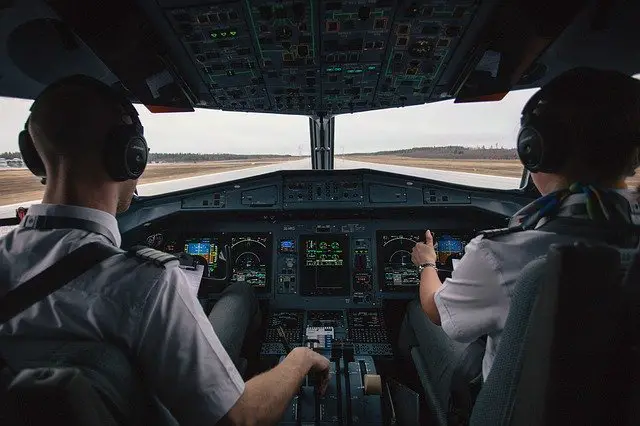
Pete has been flying aircraft for the last 20 years. He has flown everything from light piston aircraft up to heavy jets as both First Officer and Captain. He’s currently enjoying life flying the Airbus A330 for a major international airline.
GPWS (Ground Proximity Warning System) are safety systems installed on aircraft whose sole purpose is to avoid collisions with terrain. On detecting the threat of crashing into terrain the GPWS triggers aural and visual warnings in the cockpit to alert the pilots to take action.
Table of Contents
How does GPWS work
Ground Proximity Warning Systems (GPWS) are generally classed into two types: Basic and Enhanced.
Basic GPWS (often referred to simply as “GPWS”) works by measuring the aircraft’s height over the ground (and the rate of change of that height) through the use of radio altimeters (“Rad Alts”) which work by transmitting radio waves beneath the aircraft and measuring the time it takes them to be reflected back to the aircraft. This result is the height of the aircraft over the ground, or it’s “radio altitude”.
Basic GPWS combines the radio altitude of the aircraft together with the aircraft’s configuration (flaps and landing gear) and instrumentation (ILS glide slope) to issue caution and warning callouts to the crew.
Enhanced GPWS (EGPWS) works by overlaying the aircraft’s computed position with a database of known runways, terrain and obstacles to create caution and warning “envelopes” ahead of the aircraft which will trigger the relevant callouts and warnings.

GPWS Basic Modes
There are 5 basic modes of Ground Proximity Warning System (GPWS), which are usually active up to a “rad alt” (radio altitude – i.e. height above the ground) of 2500 feet.
- Mode 1 – Excessive Rate of Descent: This is triggered by high rates of descent near the ground (it’s measured by radio altitude, or “rad alt”) and results in a “Sink Rate, Sink Rate” caution. The associated warning if triggered is “Pull Up”. Mode 1 is active during all phases of flight.
- Mode 2 – Excessive Terrain Closure Rate: Mode 2 takes into account gear and flap configuration. There are two types of Mode 2 alerts: Mode 2A (active during climb, cruise and initial approach) and Mode 2B (active during approach and 60 secs after takeoff). With landing gear up the warnings are “Terrain”, “Terrain Terrain” and “Pull Up”. With landing gear down, the “Terrain” caution is triggered.
- Mode 3 – Altitude Loss Following a Takeoff or Go-Around: Triggered after significant altitude loss after takeoff or go-around – “Don’t Sink, Don’t Sink”.
- Mode 4 – Terrain Clearance Not Sufficient (while in landing configuration). Mode 4A and 4B are active during cruise and approach, and Mode 4C is active during go-around. Mode 4A triggers “Too Low Terrain, Too Low Gear” when the landing gear is up, Mode 4B triggers “Too Low Terrain, Too Low Flaps” with flaps not in landing configuration (but landing gear down) and Mode 4C triggers with flaps not in landing configuration OR gear up: “Too Low Terrain”.
- Mode 5 – Excessive Descent Below Glide Slope – triggered when the aircraft descends below the glideslope and the aural alert “Glideslope” is triggered.
Note: the above warnings, cautions and callouts differ depending on the aircraft type (and can even differ on the same type of aircraft when different systems are installed).
The Problem with Basic GPWS
The basic modes of GPWS have no “knowledge” of the location of the aircraft – they are simply triggered when certain parameters are exceeded, for example, when the rad alt (radio altimeters) detect a high rate of closure with terrain. Basic GPWS is essentially always “looking down”.
The example often given of the limitation of Basic GPWS is this: imagine an aircraft is flying level over flat ground towards a sheer cliff or mountain. As the terrain immediately below the aircraft is flat the rad alts will detect no change in aircraft altitude, and as such won’t trigger any alerts. The aircraft will continue to fly level until it crashes into the cliff.
All modes of Basic GPWS essentially “look down”, and don’t look ahead.
That’s where Enhanced GPWS comes in.
Enhanced GPWS
Enhanced GPWS (EGPWS) supplements Basic GPWS with a database of terrain and airports, and correlates this with the known position of the aircraft.
EGPWS (or “Predictive GPWS”) has a computer model of the aircraft performance and uses this to create a caution and warning envelope in front of the aircraft, including the ability of the aircraft to climb.
The Predictive element of the GPWS system uses these databases to display hazards ahead of the aircraft and alert the crew with cautions and/or warnings.
When the Predictive GPWS is operating normally the Basic GPWS Mode 2 (Excessive Terrain Closure Rate) is inhibited. If a failure is detected in the Predictive GPWS, or there is a significant discrepancy between detected rad alt height and the T2CAS altitude, Basic Mode 2 is re-enabled.
Problems with the GPWS will be alerted to the crew via ECAM/EICAS warnings.
Related: ECAM/EICAS – A Pilot’s Guide

Airbus A320/A330/A340 Predictive GPWS – Warnings and Cautions
The Airbus A320/330/340 aircraft utilize a Terrain Awareness Display (TAD) function which develops a caution and warning envelope in front of the aircraft. The TAD takes into consideration the aircraft’s altitude, nearby runways and the altitude of the runway, together with the aircraft’s speed and turn radius.
When the system detects a threat in the projected envelope it will trigger the relevant GPWS caution and warning callouts (aural alerts).
| Alert Type | Callout | ND | Other Alert |
| Warning | TERRAIN AHEAD, PULL UP | Automatic Terrain Display Solid red areas TERR AHEAD (red) | GPWS/PULL UP illuminates on each pilots instrument panel |
| ” “ | AVOID TERRAIN | Automatic Terrain Display Red/black crosshatched areas TERR AHEAD (red) | ” “ |
| Caution | TERRAIN AHEAD | Automatic Terrain Display Solid yellow areas TERR AHEAD (amber) | GPWS illuminates on each pilots instrument panel |
| ” “ | TOO LOW TERRAIN | NIL | ” “ |
During normal operation, with the TERR ON ND pushbutton selected, terrain will be displayed on the Navigation Display (ND) in front of each pilot. The ND colors the terrain depending on the threat: from green, yellow, red to magenta.
If a Predictive GPWS warning or caution is triggered while terrain is not selected on the pilot’s Navigation Display, it will automatically display on the NDs.
The system has an inbuilt Terrain Clearance Floor (TCF) for each runway in the database that will alert if descent is begun too early. This would trigger the “Too Low Terrain” warning.
The Runway Field Clearance Floor (RFCF) delivers additional envelope warnings within 5.5 NM of runways that are significantly higher than the surrounding terrain.
If the aircraft detects a low accuracy in its known position the enhanced modes of the GPWS are deactivated and it reverts to the basic modes.
GPWS Warnings versus Cautions
Generally, the pilots will first receive a GPWS warning when the system detects a dangerous flight path. If the crew do not react to the caution (its hard not too – there a lot of flashing lights and noises – see video below) then the caution callouts are replaced by warnings.
Caution Envelope
The Terrain Awareness Display (TAD) calculates a caution envelope in front of the aircraft and compares that to the terrain stored in the database. If it detects a conflict one of the following cautions is triggered:
- “Terrain Ahead” caution – if the detected terrain is ahead of the aircraft.
- “Too Low Terrain” caution – if the conflict terrain is below the aircraft.
Warning Envelope
The TAD warning envelope is closer to the aircraft than the caution envelope. As such it would normally be the case that a caution is received first and if the crew doesn’t react, the caution turns into a warning.
In a Mountain Approach Area (MAA), where there is terrain greater than 2000 ft above the runway within 6 NM, the envelope size is reduced to prevent nuisance warnings during low altitude maneuvers.
If the system detects a terrain conflict, one of the following warnings is triggered:
- “Terrain Ahead – Pull Up” warning – this is triggered if the aircraft can fly over the terrain (determined by the inbuilt performance database).
- “Avoid Terrain” warning – this is triggered when the performance model shows the aircraft cannot climb over the terrain with a sufficient safety margin.
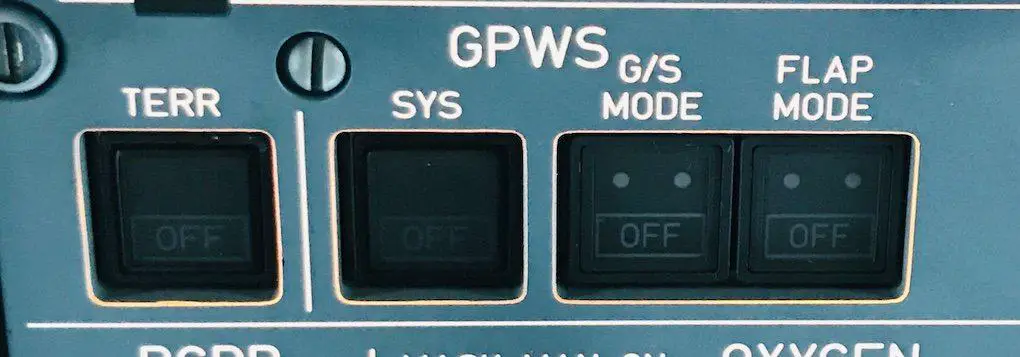
Ground Proximity Warning System – Controls
GPWS – Overhead Panel
- TERR Terrain: If selected off the TAD (Terrain Awareness Display) and TCF (Terrain Clearance Floor) are inhibited. Note: all basic modes (1-5) are unaffected. The amber “FAULT” lights with the loss of the TAD or TCF, together with an associated ECAM caution. If there are no indications on the “SYS” pushbutton (“FAULT” or “OFF”) then GPWS Basic Modes 1-5 are still available.
- SYS: When selecting SYS “off” all Basic Modes 1-5 are inhibited. If there is a malfunction in the Basi Modes 1-5, the “FAULT” light will illuminate amber (together with the relevant ECAM alert). Note: Mode 5 (glideslope warning) receives its ILS information from ILS 1 – therefore is ILS 1 fails, GPWS Mode 5 is unavailable but the PWS fault warning and fault light are not triggered.
- G/S Mode: Glide slope mode. If “off” is illuminated it means Mode 5 (glide slope warning) is inhibited.
- Flap Mode: If selected off this inhibits Mode 4 (“Too Low Flaps”). Flap mode is selected off if landing with reduced flap settings. (Note: The MCDU allows a Flap 3 landing to be selected – if this is the case the flap warning will not sound if landing with Flaps 3.
GPWS – Main Instrument Panel
The main instrument panel contains two sets of the following instruments (one set for each pilot): “PULL UP – GPWS” pushbutton, and “TERR ON ND” pushbutton.
“PULL UP – GPWS” Pushbutton
The “PUL UP-GPWS” pushbutton contains two separate alerts:
- PULL UP – When a “Pull Up” warning is triggered in Mode 1 or 2, or by the TAD (Terrain Awareness Display), “PULL UP” illuminates to give a visual warning (in addition to the associated aural warning).
- GPWS – When any other warning is triggered, “GPWS” illuminates in amber, together with the corresponding aural warning.
Note: if GPWS illuminates due to a Mode 5 Glide Slope caution, if a pilot press the button it will cancel the light and the aural alert.
“TERR ON ND” Pushbutton
The “TERR ON ND” is beside each pilot’s ND (Navigation Display) and each button controls the onside terrain display on the ND.
If the Terrain Awareness Display (TAD) generates a caution when the “TERR ON ND” is selected off, the terrain will be automatically displayed on the ND.
Note: to differentiate from the weather radar (which can also be displayed on each pilot’s ND), the terrain display “sweeps” from the center outward to either side of the ND.
GPWS Test
The Ground Proximity Warning System (GPWS) can be tested on the Airbus A320/A330/A340 by pressing the “Pull Up-GPWS” pushbutton on the main instrument panel.
If the button is pressed briefly, then only some of the aural warnings are triggered. If the button is pushed continuously then all of the warnings sound (and from memory it takes a long time to go through the full test).
GPWS Memory Items (Airbus A320)
“Memory items” are actions that pilots need to perform immediately from memory. In the past some models of older aircraft could have quite a lot of memory items (an aircraft I flew in the past had more than 40!) but most modern aircraft only have a few. For example, the A320 has 10 memory items:
Airbus A320 Memory Items
- Loss of Braking
- Emergency Descent
- Stall Recovery
- Stall Warning at Lift Off
- Unreliable Speed Indication
- TCAS Warnings
- Windshear Warning – Reactive Windshear
- Windshear Warning – Predictive Windshear
- GPWS/EGPS Cautions
- GPWS/EGPWS Warnings
Learn move about TCAS and TCAS Memory Items here.
Memory Items: GPWS/EGPWS Cautions
“Terrain Terrain” – “Too Low Terrain” – “Terrain Ahead” – “Obstacle Ahead”
During daylight and in VMC (Visual Meteorological Conditions), with both terrain/obstacles in sight, the procedure allows you to consider adjusting the flight path by adjusting pitch, bank and thrust to silence in the warning.
During night or in IMC, the memory procedure is to immediately and simultaneously:
- Autopilot … Disconnect
- Pitch … Pull Up (pull to full backstick and maintain in that position)
- Thrust Levers … TOGA
- Speed Brakes Lever … Check Retracted
- Bank … Wings Level or Adjust
- Do not change configuration (Slats/Flaps, Gear) until clear of obstacle
Note: although aircraft have the best performance when their wings are level, the procedure does allow crew to turn (while climbing) if that is the safest course of action.
“Sink Rate”
- Above 1000 ft AAL in IMC / above 500 ft AAL in VMC
- Flight Path Adjust
- Below 1000 ft AAL in IMC / below 500 ft AAL in VMC
- Go-Around … Consider
“Too Low Gear” – “Too Low Flaps”
- Go-Around … Perform
“Glideslope”
- Above 1000 ft AAL in IMC or above 500 ft AAL in VMC
- Flight Path … Adjust
- When conditions require a deliberate approach below glideslope
- G/S Mode … Off
- Below 1000 ft AAL in IMC / below 500 ft AAL in VMC
- Go-Around … Consider
Memory Items: GPWS/EGPWS Warnings
“Pull Up” – “Terrain Ahead Pull Up” – “Obstacle Ahead Pull Up”
The memory actions for any of the EGPWS warnings are:
- Autopilot … Disconnect
- Pitch … Pull Up (pull to full backstick and maintain in that position)
- Thrust Levers … TOGA
- Speed Brakes Lever … Check Retracted
- Bank … Wings Level or Adjust
- Do not change configuration (Slats/Flaps, Gear) until clear of obstacle
Video – Airbus A320 CBT: GPWS
Further Reading About GPWS
Aviation-Accidents.net: GPWS
Skybrary: Terrain Awareness Warning Systems
Frequently Asked Questions about GPWS
What is GPWS?
Ground Proximity Warning System (GPWS) is an aircraft safety system whose purpose it to detect possible collisions with terrain and to alert the pilots with warnings in the cockpit.
What is EGPWS?
Enhanced Ground Proximity Warning System (EGPWS) builds on the system of Basic GPWS with the addition of a database of terrain and obstacles.
What is the difference between GPWS and EGPWS?
Basic GPWS uses radio altimeters (“rad alts”) to calculate the aircraft’s height above the ground and therefore Basic GPWS always “looks down”. EGPWS (Encanced GPWS) builds on the capability of Basic GPWS with a database of terrain and obstacles and cross references this with the aircraft’s position. This means EGPWS has the ability to “look ahead” to warn pilots of terrain or obstacles ahead.
How many GPWS basic modes are there?
There are 5 Basic GPWS Modes: Mode 1, Mode 2 (A and B), Mode 3, Mode 4 (A, B and C) and Mode 5.
What colors does GPWS use?
GPWS uses green, yellow, red and magenta in order of severity to display terrain and obstacles on the Navigation Displays (NDs) in the cockpit.
What is a Mountainous Approach Area (MAA)?
A Mountain Approach Area (MAA) is where there is terrain greater than 2000 ft above the runway within 6 NM. The MAA is used to reduce the caution and warning envelope size to prevent nuisance warnings during low altitude maneuverss.
What is Terrain Clearance Floor (TCF)?
The Terrain Clearance Floor (TCF) is part of the EGPWS database for each runway that will alert the pilots if descent is begun too early. This would trigger the “Too Low Terrain” warning.
What is Runway Field Clearance Floor (RFCF)?
The Runway Field Clearance Floor (RFCF) is part of the EGPWS system that delivers additional envelope warnings when within 5.5 NM of runways that are significantly higher than the surrounding terrain.
What is Terrain Awareness Display (TAD)?
Airbus aircraft utilize a Terrain Awareness Display (TAD) function which is part of the EGPWS system. The TAD develops a caution and warning envelope in front of the aircraft taking into consideration the aircraft’s altitude, nearby runways (and runway altitude), together with the aircraft’s speed and turn radius.
What are Rad Alts in aviation?
Radio Altimeters (“Rad Alts”) are types of altimeters on aircraft that measure the height of aircraft above the ground. They use this by transmitting radio waves below the aircraft and measuring the time it takes them to be reflected off the ground back to the aircraft.
What are the GPWS callouts?
GPWS callouts are aural alerts that are played through speakers in the cockpit to warn pilots about potential flight into terrain.
The EGPWS Caution Callouts are: “Terrain Terrain”, “Too Low Terrain”, “Terrain Ahead”, “Obstacle Ahead”, Sink Rate, Sink Rate”, “Too Low – Gear”, “Too Low – Flaps”, and “Glide Slope”.
The EGPWS Warning Callouts are: “Pull Up”, ‘Terrain Ahead – Pull Up” and “Obstacle Ahead – Pull Up”.
What does “sink rate, sink rate” mean?
“Sink rate, sink rate” is a Mode 1 GPWS (Ground Proximity Warning System) caution that warns of excessive rate of descent near the ground.
What is TAWS?
Terrain Awareness Warning System (TAWS) is a generic term introduced by the U.S. FAA to cover any system whose purpose is to avoid impacting terrain. GPWS and EGPWS are both considered TAWS systems.
If you found this article interesting please take 5 seconds to share this on your favorite social media. Thanks so much, I really appreciate it! [email protected]

Pete has been flying aircraft for the last 20 years. He has flown everything from light piston aircraft up to heavy jets as both First Officer and Captain. He’s currently enjoying life flying the Airbus A330 for a major international airline.
